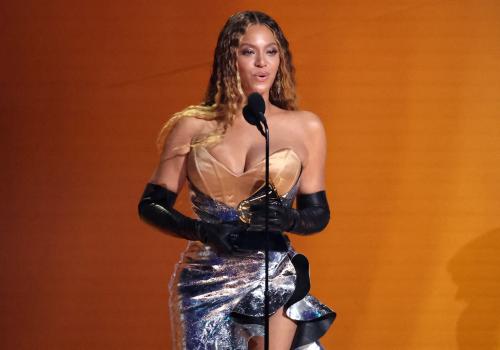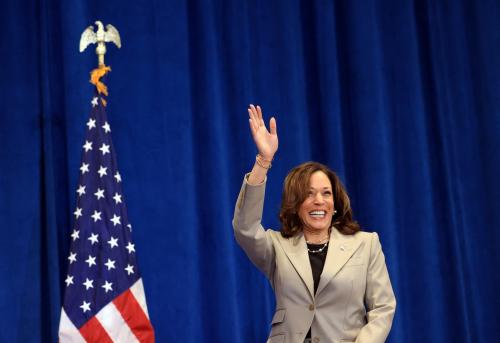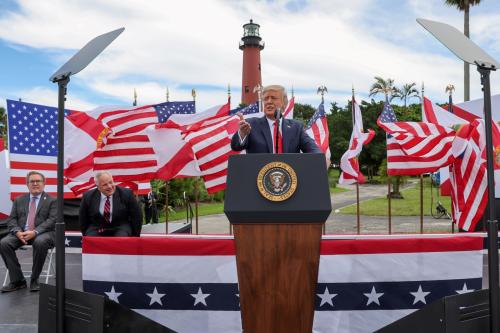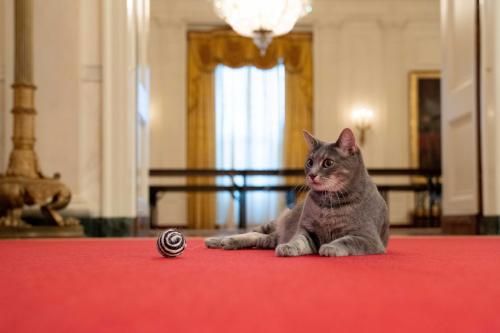Many pundits have expressed surprise that Vice President Kamala Harris’s campaign for president has taken off so swiftly. In the span of a week, she has been able not only to quickly consolidate support for her candidacy but also erase Donald Trump’s lead in the polls. Those who have been following how the Democratic voter coalition has been changing and growing ever since President Barack Obama’s first campaign for president against John McCain were not at all surprised. In the 2008 election, women, young people, and people of color (there’s a substantial overlap between the latter two groups) delivered Obama’s victory while older voters basically split between the two candidates.
The first measurement of the wave that washed over the American public was a six-point increase in the percentage saying the country is “on the right track” in last week’s New York Times poll of likely 2024 general election voters. Using the same methodology that had drawn criticism from Democrats in the past, the Times found that 29% now said the country was headed in the right direction compared to only 23% who gave that answer in the previous New York Times poll which was taken immediately after the Biden-Trump debate. This increase was driven mostly by the demographic segments that have come to be associated with the emerging Democratic majority coalition—women, voters under 45, people of color, and those who identify as Democrats.
The increase in right track responses was particularly large among 18 to 29-year-olds (from 12% to 27%), Black people (34% to 39%), Hispanics (27% to 36%), the largely Asian-American “other nonwhite voters” (30% to 38%), those who live in cities (24% to 32%) and suburbs (25% to 32%), as well as Democratic identifiers (43% to 51%) and those who said they were voting for the Democratic presidential candidate, Biden in the earlier poll (42%) and Harris in the latter (52%). Such a change over a three-week period is very rare in American public opinion. Even more astounding, in the absence of another major intervening event, it is likely the shift actually occurred in just the three days between President Biden’s withdrawal from the race in favor of Vice President Harris and the date when the Times completed its latest survey.
Thanks to this growing feeling of optimism about the future, Harris has pulled essentially even with Trump (Trump 48%, Harris 47%) according to this most recent survey. Three weeks earlier, the Times found President Biden trailing Trump by a statistically significant 6-point margin (49% to 43%). Harris’s gains flowed from how complete a job her candidacy has done in reuniting the new winning Democratic coalition in this newest poll—women, voters under 45, and people of color. Support for the new Democratic presidential nominee in comparison with Joe Biden rose from 51% to 55% among women, 48% to 59% among 18 to 29-year-olds, 43% to 49% among 30 to 44-year-olds, 47% to 60% among Hispanics, and 39% to 58% among nonwhite voters who are not Black or Hispanic.
Not only has Kamala Harris’s candidacy united the Democratic coalition but it has also made its major voting segments much more likely to turn out and vote this fall. For example, the percentages among people of color who say they are “almost certain” to vote in November has risen sharply (Black people from 53% to 62% and Hispanic people from 46% to 59%). “Almost certain” to vote numbers have also risen among city dwellers (from 59% to 63%) and suburbanites (from 62% to 65%). Most decisively, the change in Democratic presidential nominees has activated Democratic identifiers (from 61% “almost certain” to vote to 72%) and those who said they were voting for the Democratic presidential candidate (from 65%, when Biden was the likely nominee, to 70% when Harris became the likely nominee). In fact, potential Harris voters are now more likely to say they are “almost certain” to vote than are potential Trump voters (70% to 65%).
Not all of this shift in voter sentiment should be attributed just to Biden’s decision not to be a candidate. Some of it also reflects how favorably the members of today’s Democratic coalition view Vice President Harris personally. Majorities of women (55%), 18 to 29-year-olds (56%), 30 to 45-year-olds (51%), Black people (80%), Hispanic people (66%), other nonwhites (51%), white college graduates (54%), city dwellers (55%), suburbanites (50%) and, of course, Democrats (90%), have favorable opinions of Kamala Harris.
Meanwhile, a majority of all of these groups have unfavorable impressions of Donald Trump. According to the questions about personal characteristics that the New York Times survey asked, her advantage over Donald Trump among all likely voters is greatest for having the “right temperament for the presidency (51% to 49%),” “being intelligent (65% to 58%),” and “caring about people like you” (51% to 48%). She even has an edge over Trump among some demographic segments of the Democratic coalition, especially Black people (+58 points) and Hispanic people (+22 points), “for being a strong leader,” a personal characteristic that Trump has cultivated for his entire adult life.
These positive impressions reinforce Kamala Harris’s appeal to the faster growing part of the electorate—people under the age of 45, women, and minorities—suggesting she may be able to turn the current wave of excitement into victory in November. Before that happens, however, she faces one of the most daunting and unusual challenges in presidential politics in the nation’s history—convincing a majority of the public in just over one hundred days, that she should be the next president of the United States. We shall see if she is up to that challenge soon enough, but her gains among key segments of the electorate in her first week of campaigning suggests she may be able to reassemble the Obama coalition of 2008.







Commentary
Vice President Kamala Harris’s presidential campaign revives the Obama coalition
July 29, 2024